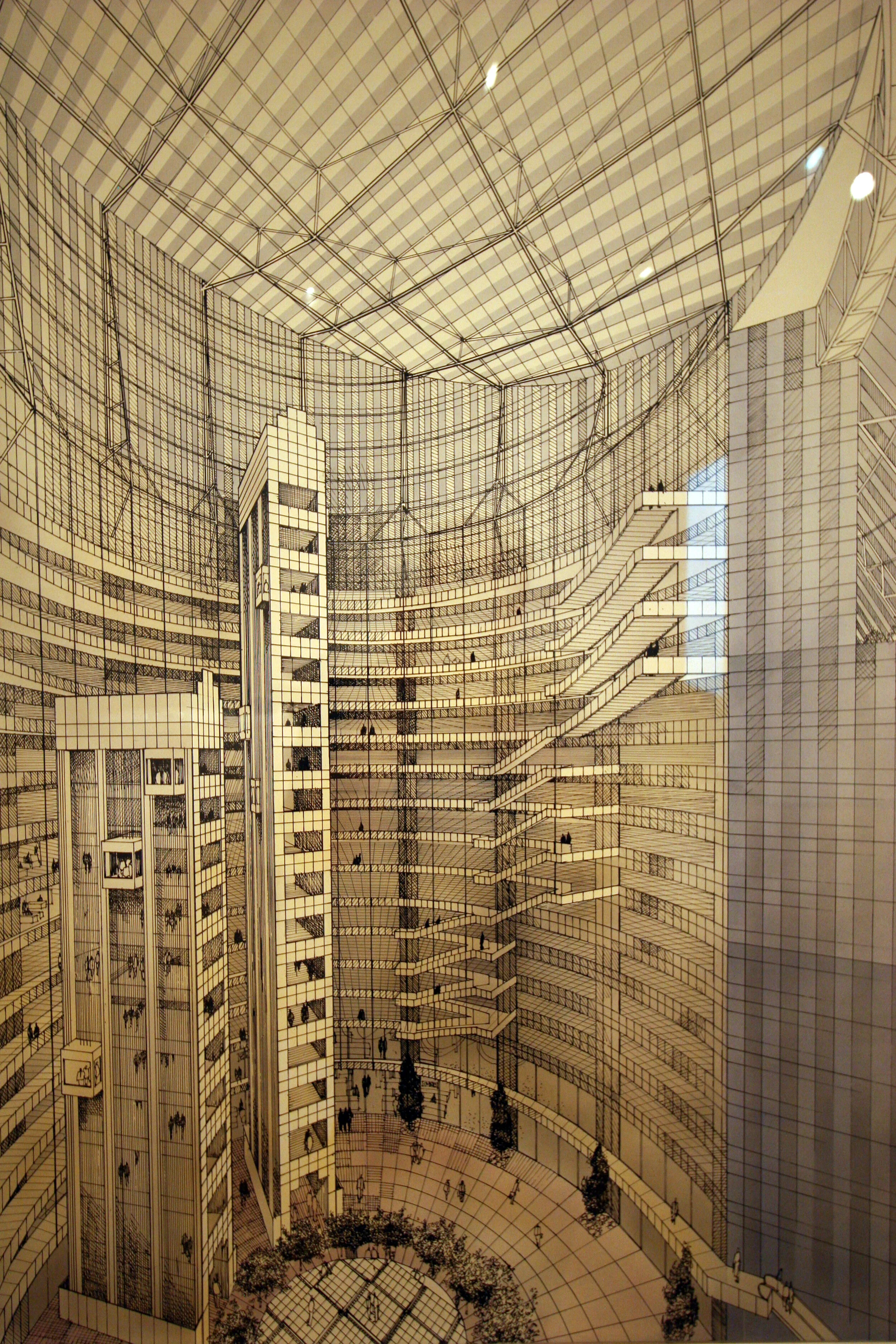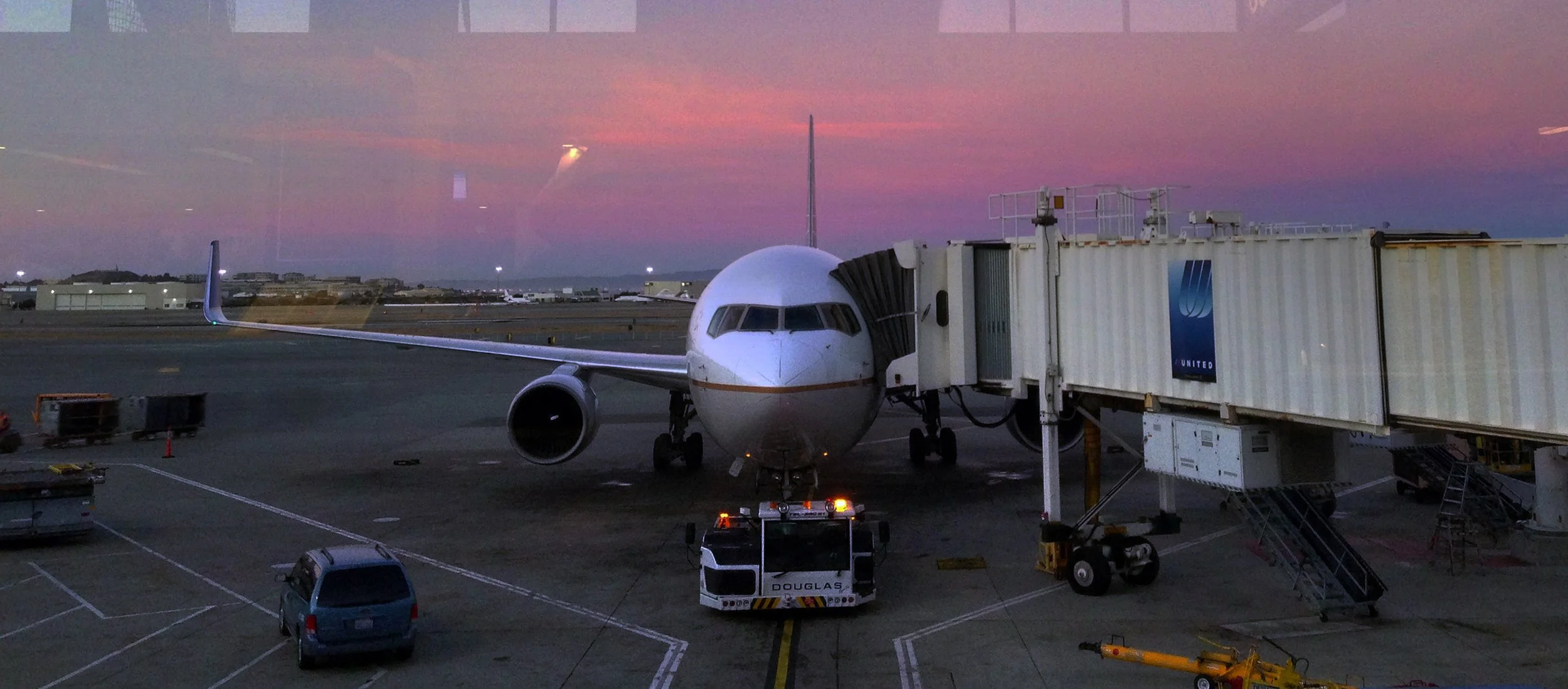
Page 6 of 6
Plano, Illinois
Singing turned to sirens as ringing returned to my ears
A great building by a great architect, the Farnsworth House by Mies van der Rohe is Modernism's real glass house. Perfectly sited and perfectly detailed, totally see through and totally impractical (Mies included no storage whatsoever), the building hovers over its site and needs to be seen in person to be believed.
The siting may be perfect (and it is) but the site is not. The house is right near the Fox River and smack dab in the middle of a ten year flood plain. The last flood saw water rise over five feet above the ground floor, shatter a crystal clear window (which had to be replaced with more pedestrian tempered glass) and cause more damage than anyone wants to see. In fact the last time I was in Chicagoland I had booked a tour, a tour that I found out was cancelled since heavy rains had flooded the grass and paths and made access to the house impossible. A real problem with no real solution, or more accurately no really good solution. Build a flood wall and wreck the site. Move the house away from its site and wreck what makes it special in the first place. Or just do nothing and watch it flood again and again. Your choice.
The house is now operated by the National Trust for Historic Preservation, an organization I only sometimes agree with, and their stance is that moving the house would destroy it and it's all important to preserve all that makes the house special. This however hasn't prevented them from restoring the initial visitor approach to the house (you enter from an odd angle side path instead of the original driveway location as intended) or restoring the landscape back to open fields with natural grasses. Still at least they have made the house open to the public and even allow interior photos, so all (and by all I mean you) can see not only through the glass house but also now can start to imagine what it must feel like to be inside looking out.
Inside Frank Lloyd Wright's best and most revolutionary building, at least according to me. Unity Temple in Oak Park may not be as perfect as the Farnsworth House (few things can be) but it does feature an amazing circulation and spatial experience. When you first enter that main space you see it from below, a letterbox framed compressed view at foot level, then you move to an unreal corner stair, pick a level (there are more than one to choose from), find a seat and sit back and enjoy the always filtered light and constantly folding and complex space. Almost enough to make you want to become a Unitarian, as if anyone actually knows what being a Unitarian even means anyway.
I have been to Chicago more than once, in fact more than once this year and now more than once in this slideshow. Two weekends ago work took me back to where I always seem to end up anyway, but this time at least I had a chance (or perhaps more accurately an excuse) to try something I had wanted to for some time. A free concert on the lawn by the orchestra from the Grant Park Music Festival (Sibelius Symphony Number Two, if you care), but for me really just an excuse (or perhaps more accurately a chance) to pretend like I'm a local and sit outside on the lawn, near the lake, under the steel lattice, in full view of the city on a perfect summer night.
The weirdly distorted picture (for those already wondering) is actually many, many pictures taken with my iPhone 4 and merged on the spot using an app called AutoStitch, an app I am currently overusing but will likely soon grow tired of, like all things eventually.
Form follows function (or does it?) at Adler & Sullivan's Trading Floor at the Chicago Stock Exchange, a wonderful historic building that was demolished in the 1970s. While the building itself may be long gone, its most dramatic space lives on very quietly at the Art Institute of Chicago, relocated and rebuilt and tucked far away in the back of the museum, somewhere where you really have to be looking for it to find it. A real shame that most people visit and leave the museum without even knowing it exists, but also a real treat for anyone willing to hunt it down and enjoy the relocated and rebuilt trading floor all to themselves.
Not that far from O’Hare in Des Plaines, Illinois is the McDonalds Number One Museum, although that name takes just a few liberties. The big one is that it was actually McDonald’s Number Nine (the original was in San Bernardino, California), but it is the first restaurant from the Ray Kroc McDonald’s Corporation, as opposed to those other restaurants built by actual McDonalds. It also looks original but it’s all fake- the original McDonald’s Number One was on the same site and remodeled repeatedly, eventually torn down and replaced with a replica. And you also can’t even get a burger there- it’s a museum only now.
Everything that has a beginning has an end. That actually might be a quote from one of the lesser Matrix films, but it doesn't mean that it's still not true. So while I am fortunate enough to still be traveling (supposed to be in Idaho on Thursday, Minnesota the week after that) this is as good a point as any to stop another slideshow, to step back once again and (just like you) and start waiting for the next one. If things continue as imagined (always a big if) I'll likely do another one of these in a few months, maybe sooner, maybe later. Who can think that far ahead anymore.
But if I'm going to end another slideshow somewhere, it's hard to imagine a better place than Chicago, a place where storm clouds still gather and where Modernism has yet to die.
There’s a part four of this slideshow
National Parks, wild horses, dangerous fires, underground bunkers, moon craters and, of course, Winnipeg


